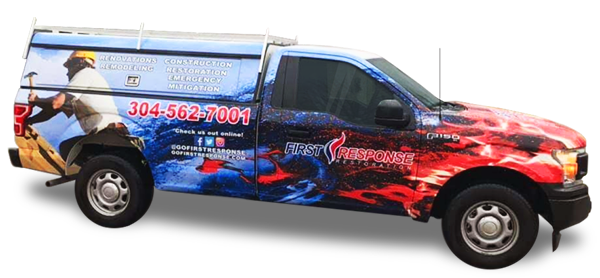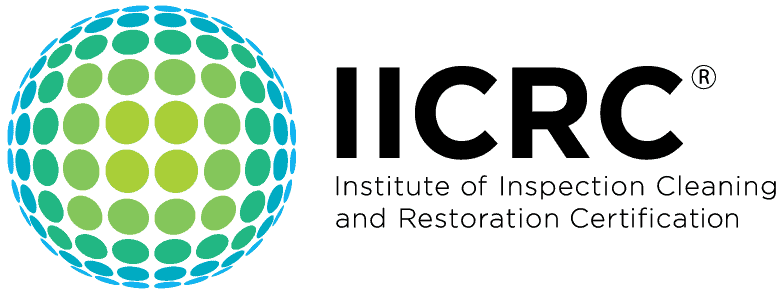What are the steps for cleaning up after a fire?
If your property has been affected by a fire, the cleanup process can be overwhelming. However, it is crucial to approach the cleanup systematically to ensure safety and effectiveness. In this section, we will guide you through the necessary steps for cleaning up and restoring your property after a fire.
Following these steps will not only ensure a thorough cleanup process but also make it easier for you to document the damages for insurance claims.
Key Takeaways:
- Fires can cause extensive damage to your property, and the cleanup process can be overwhelming.
- The first step in cleaning up after a fire is to assess the extent of the damage.
- Debris removal, cleaning, sanitizing, addressing smoke odor, and restoring and rebuilding are the necessary steps in the fire cleanup process.
- Consulting with professionals and documenting the details of the damage can help with insurance claims.
Assessing the Damage
After a fire, the first step in the cleanup process is assessing the damage. Before even touching anything, you need to evaluate the extent of the damage and identify any potential hazards. This includes checking for structural damage, gas leaks, and electrical hazards. It’s important to note that entering a fire-damaged property can be dangerous, so it’s best to leave this task to trained professionals.
Once the property has been deemed safe to enter, you can begin documenting the damage for insurance purposes. Take photos and videos of the affected areas, making sure to capture every detail. This will be helpful when you file an insurance claim.
When assessing the damage, it’s important to consider the type of fire that occurred. Different types of fires produce different types of residues, and each requires a specific cleaning process. For example, a grease fire produces a sticky residue that can be difficult to clean, while a wood fire produces dry ash that can be easily vacuumed up.
Overall, assessing the damage is a crucial step in the fire cleanup process. It ensures safety and helps you identify the best course of action moving forward.
Removing Debris
After assessing the damage caused by the fire, the next step is to remove debris and damaged materials from the affected areas. The process of fire debris removal involves safely and carefully handling hazardous materials, including asbestos, PCBs, and other toxic chemicals. It is important to rely on professionals who are trained and equipped to handle these materials safely.
During the fire damage cleanup process, it is important to properly dispose of debris and materials that cannot be salvaged. This may include damaged furniture, appliances, insulation, and any other materials that were affected by the fire. Be sure to follow local laws and regulations regarding disposal of hazardous waste.
Fire Restoration Procedures:
Remove debris and damaged materials safely and properly
Clean and sanitize affected areas
It is important to note that the fire debris removal process can be a time-consuming and difficult task. It is best to rely on professionals who have the equipment and expertise to handle the job safely and efficiently. Professionals can also help identify which items can be salvaged and restored, and which need to be disposed of properly.
By following proper fire restoration procedures, you can ensure the safety of your property and those around you. It is important to work with professionals who can help you navigate the fire damage cleanup process, from assessing the damage to restoring and rebuilding your property.
Cleaning and Sanitizing
After debris removal, the affected areas need thorough cleaning and sanitization to minimize health risks. Soot, ash, and smoke residue must be removed from walls, ceilings, floors, and other surfaces. It is also crucial to clean air ducts and ventilation systems to eliminate any lingering odors and ensure the air quality is safe to breathe.
When cleaning, use appropriate tools and chemicals. For example, a vacuum equipped with a HEPA filter can remove fine particles that regular vacuums miss. Always follow the manufacturer’s instructions when using cleaning chemicals and avoid mixing different chemicals as they can create toxic fumes.
Sanitization is also critical in ensuring safety. Use appropriate disinfectants to eliminate harmful bacteria, viruses, and other pathogens. Pay attention to high-touch areas such as doorknobs, light switches, and countertops.
When sanitizing, allow enough contact time for the disinfectant to work effectively. Typically, this is around 10 minutes, but refer to the manufacturer’s instructions for specific guidance. Once done, rinse surfaces with clean water and dry them thoroughly.
Remember to document all the cleaning and sanitization activities you undertake. These records may be necessary for insurance claims, especially if you hire professionals to handle the cleanup.
In summary, cleaning and sanitizing are crucial steps in restoring your property after a fire. Follow the fire damage restoration steps outlined above and refer to the fire damage cleanup checklist to ensure you do not miss any crucial steps.
Addressing Smoke Odor
Even after the initial cleanup, smoke odor can linger in your home. This can be a persistent and unpleasant reminder of the fire. Removing smoke odor requires specialized equipment and techniques.
The first step is to identify and remove any remaining sources of smoke odor, such as charred materials or ash. Next, the affected areas must be thoroughly cleaned and sanitized. This includes deep cleaning of carpets and upholstery, as well as wiping down hard surfaces with specialized cleaning solutions.
In some cases, it may be necessary to use specialized equipment to neutralize the smoke odor. This can include the use of ozone generators or thermal fogging. These methods work by breaking down the odor-causing molecules and neutralizing them.
It is important to note that the use of these specialized techniques should only be handled by professionals. Improper use can cause further damage to your property or pose a safety risk.
Ultimately, addressing smoke odor is a crucial step in the fire restoration process. By properly removing smoke odor, you can ensure that your home is safe and habitable once again.
Restoring and Rebuilding
Once the cleaning and sanitization process is complete, you can focus on restoring and rebuilding the affected areas. This is where the fire damage cleanup checklist comes in handy. Check each task off the list once it is completed, making sure not to miss anything.
You may need to repair or replace damaged structures, such as walls, ceilings, or floors. This is also the time to install new insulation if needed. Don’t forget to repaint or refinish surfaces as necessary.
During the rebuilding process, it’s important to follow fire restoration procedures to ensure that the work being done is up to code and safe for habitation. This may require consultation with professionals in the relevant fields.
Once the restoration and rebuilding are complete, you can move back in and resume your normal activities. Keep all the necessary documentation for insurance claims and make sure to update your home inventory to reflect any changes.
Conclusion
Cleaning up after a fire can be a daunting and overwhelming task. But by following the necessary steps, you can restore your property to its pre-fire condition and ensure the safety of your home and family.
Remember to always start with assessing the damage, removing debris, cleaning and sanitizing the affected areas, and addressing any smoke odor. Then, move on to the restoration and rebuilding process. It’s important to have a fire damage cleanup checklist to ensure you don’t miss any crucial steps.
If you need assistance throughout the fire restoration procedures, don’t hesitate to seek help from a professional fire damage restoration company. And be sure to document all the necessary information for insurance claims.
With a systematic approach and the right tools, you can successfully navigate the fire damage restoration steps and make your home safe for habitation once again.
FAQ
The steps for cleaning up after a fire include assessing the damage, removing debris, cleaning and sanitizing, addressing smoke odor, and restoring and rebuilding the affected areas.
To assess the damage, you should evaluate the structural integrity, identify potential hazards, and document the damage for insurance purposes.
Debris and damaged materials should be safely removed from the affected areas. This includes furniture, appliances, insulation, and any other materials affected by the fire.
After removing debris, thorough cleaning and sanitization of the affected areas is necessary. This includes cleaning soot, ash, and smoke residue from walls, ceilings, floors, and other surfaces. Air ducts and ventilation systems should also be cleaned to eliminate any lingering odors.
Smoke odor can persist even after the initial cleanup. To address smoke odor, you may need to use specialized equipment, such as ozone generators or thermal fogging, to neutralize the odor.
Once the cleaning and odor removal process is complete, the focus shifts to restoring and rebuilding the affected areas. This may involve repairing or replacing damaged structures, installing new insulation, and repainting or refinishing surfaces.
While some smaller fires may be manageable to clean up on your own, it is often advisable to seek professional help for fire cleanup to ensure safety and effectiveness. Consulting with professionals can also help with the insurance claim process.

















